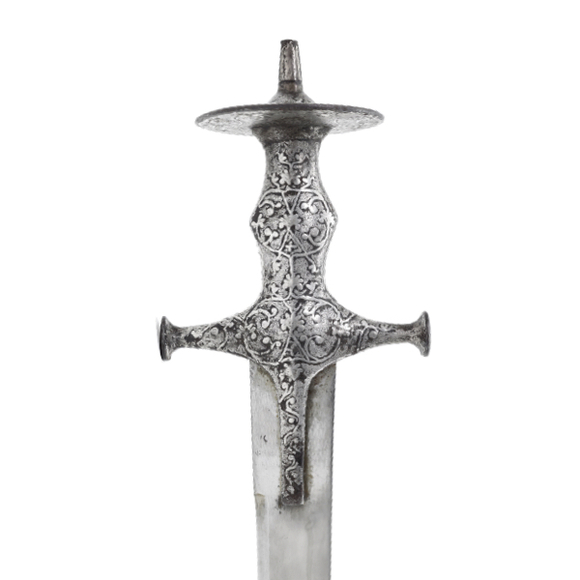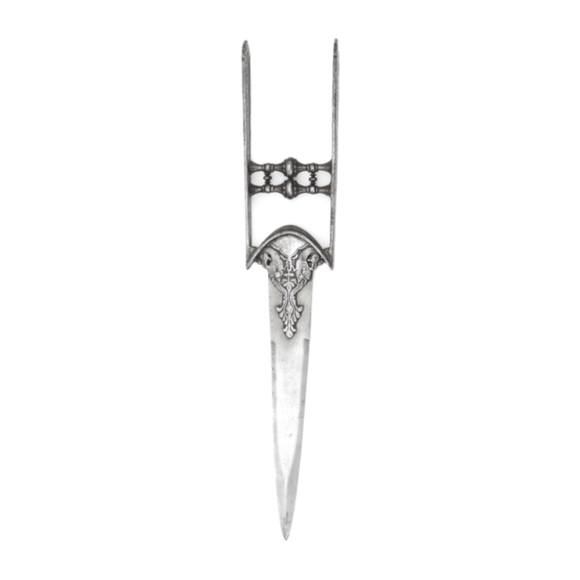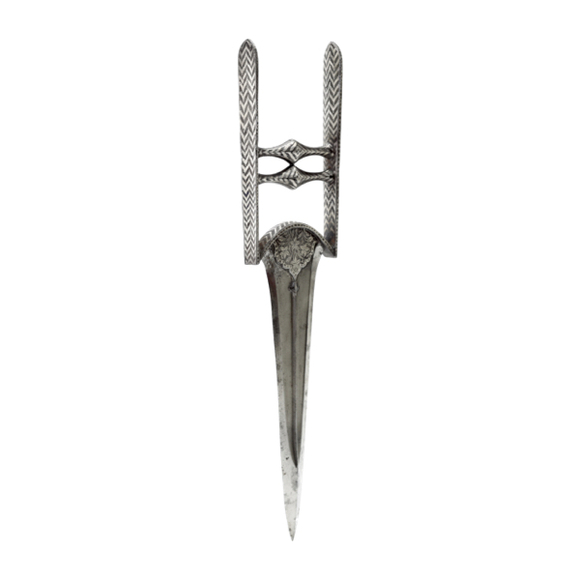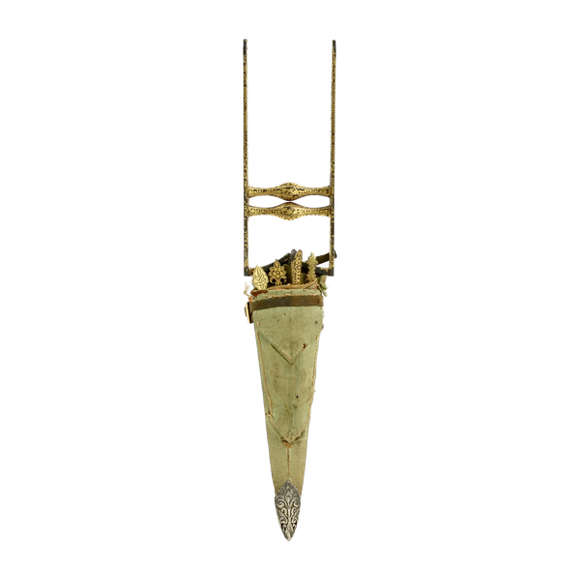The hilt is in the typical Marwari Rajput style, made by Ram Namar in 1857 A.D.

27 cm
14 cm
Base 5.5 mm
Middle 4.5 mm
At swollen tip 5.5 mm
Base 52 mm
Middle 27 mm
At swollen tip 19 mm
173 grams
Rajasthan, possibly Bundi
Iron, steel, gold, wood, silk velvet, silver
1800-1850
Introduction
In many old warrior cultures, boys started training at a very young age. Sometimes as young as five years old. To this end, most of these cultures produced their traditional weapons in a small size as well. Small swords, small bows and arrows, even small muskets are encountered. Today, these items are rather rare.
This example
Presented in this article is a fine small katar for a child or young boy, attributable to the Rajput warrior caste. The overall form is typical Rajasthani and reminiscent of katar made in Bundi, especially the base of the blade and shape of the handle bars.
The blade has slightly concave edges and a swollen, reinforced tip. There is a pronounced center ridge, with a golden damascened flower chiseled at the base.
The steel is forge folded, pattern-welded showing dots with rings, a type of pattern called "bird's eye". The blade is in as found condition and the pattern not showing very prominently anymore. A polish by Philip Tom could bring out the pattern once again.
The hilt is of classic form with two swelling handle bars in between parallel side bars. It is decorated with geometric and floral designs in gold, in a typical Rajasthani fashion. There are crosswise connections betwen the handle-bars, often seen on katar from Bundi.1 The style is also attributed to Sirohi.2
Comes complete with its original wooden scabard, covered with green velvet and adorned with silver thread.
Notes
1. Thomas Holbein Hendley; Ulwar and its art treasures, London: W. Griggs, 1888.
2. Dr. G.N. Pant; Indian Arms And Armour. 3 Volumes. 1978.











Of a style often associated with Tanjore, the seat of the Vijayanagara empire.






